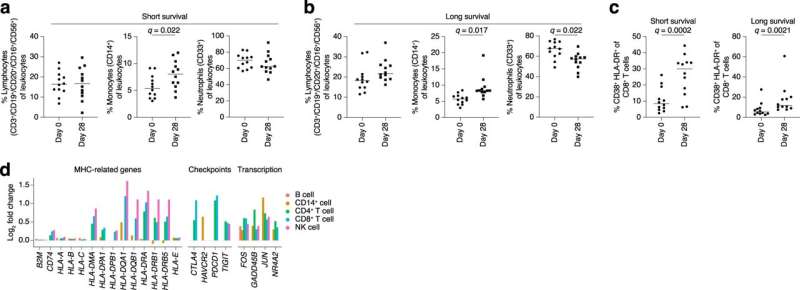Clinical trial: New combination treatment for eye melanoma increased patient survival

Once it has spread, uveal (intraocular or eye) melanoma—an unusual form of cancer—has a very high mortality rate. In a study published in Nature Communications, researchers and doctors at the University of Gothenburg and Sahlgrenska University Hospital show that, in a small group of patients with metastatic uveal melanoma, a new combination treatment can bring about tumor shrinkage and prolonged survival.
Uveal melanoma, an infrequent form of malignant melanoma, starts in the pigment cells of not the skin, but the eye. For skin melanoma, immunotherapy using "checkpoint inhibitors" has proved effective in many cases, but this has not applied to intraocular melanoma. Some 80 people get uveal melanoma in Sweden annually, and half of them get metastases, often in the liver. Patients with metastatic uveal melanoma frequently die shortly after diagnosis.
Clinical trial
This is a Phase II trial in which 29 patients with metastatic eye melanoma received a combination of two inhibitor drugs that target HDAC (histone deacetylase) and PD-1 (a checkpoint protein on T cells) respectively. In four of these patients, the tumors shrank significantly, and for several patients the course of the disease was slowed down. Unusually, some of the patients are still alive today, three years after the study began.
"Our hope was that the HDAC inhibitor would reprogram hidden cancer cells so that they could be detected by the immune cells, thus making the immunotherapy with PD-1 inhibitors effective," explains Lars Ny, senior lecturer at the University of Gothenburg and physician specializing in oncology at Sahlgrenska University Hospital.
"On the whole, the clinical trial met our expectations, although this doesn't seem to be a curative treatment either. To find out why there were such major differences in how well patients responded, we performed genetic analyses. These showed that the treatment worked better against the tumors where the BAP1 gene was active and intact. This gene is often inactivated in metastases, but now we find that it's associated with a better response to immunotherapy," says Jonas Nilsson, professor at Sahlgrenska Academy at the University of Gothenburg, who is active at both the Sahlgrenska Center for Cancer Research and the Harry Perkins Institute of Medical Research in Perth, Australia.
The research team is now continuing to investigate why loss of the BAP1 gene causes resistance to immunotherapy, and what other changes in blood components may predict improved survival after immunotherapy in uveal melanoma patients.
More information: Lars Ny et al, The PEMDAC phase 2 study of pembrolizumab and entinostat in patients with metastatic uveal melanoma, Nature Communications (2021). DOI: 10.1038/s41467-021-25332-w



















